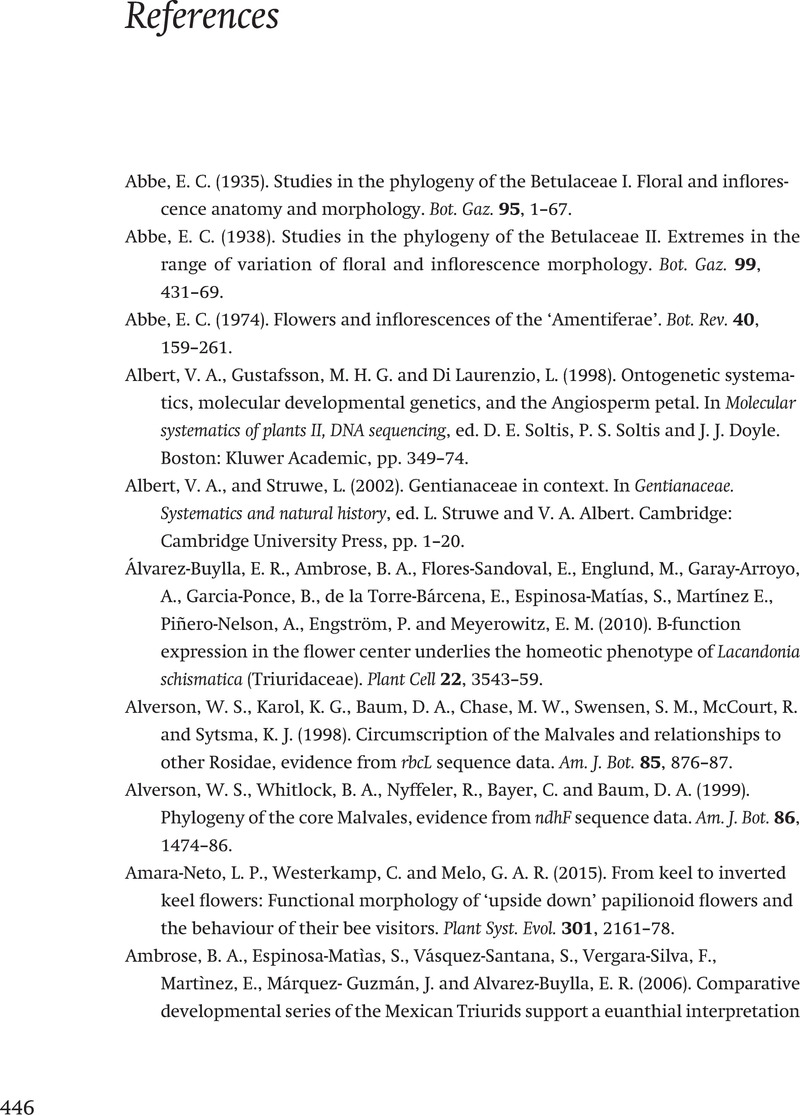References
Published online by Cambridge University Press: 11 March 2022
Summary

- Type
- Chapter
- Information
- Floral DiagramsAn Aid to Understanding Flower Morphology and Evolution, pp. 446 - 497Publisher: Cambridge University PressPrint publication year: 2022



